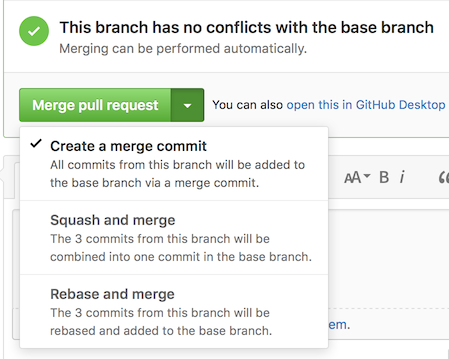I'm going to share a video with you where I merge a PR on Github where I use two more advanced techniques to provide an alternative to a straight git merge. Don't miss this if you are going to start maintaining or contributing to an open-source project.
A new open-source project
A couple of weeks ago I started an open-source project to create a Golang port of the Pimoroni Blinkt library. The Blinkt is a hardware add-on for the Raspberry Pi with 8 RGB LEDs.
My aim for the Golang library was to match the Python interface and API as closely as possible and then to port the examples one-by-one. Before sharing the library I wrote two blog posts to help people get started with Golang and the Raspberry Pi:
The video
In this video I checkout a pull request from
rgee0, test the code and then rebase and squash his commits before pushing them back to the master branch on Github.
Additional notes
I wanted to highlight a few points about merging pull requests on an open-source project:
Checking out a PR for testing/editing
Once you have eye-balled a Pull Request on Github you will probably want to pull the code down onto your laptop or device to test it out. In the video we used git fetch. Read more on the Github documentation page:
Merge vs. rebase
Using git rebase overlays someone else's work over the top of your repository. If you have any pending changes you will need to commit them or stash them away with git stash prior to running the command. It saves spamming your log with messages produced by git merge like: Merging branch xyz into master.
The Github UI has recently added a feature to help maintainers for when squashing and rebasing is not practical for the contributors.

Communicating with your contributors
Contributions to open-source projects could come from anyone, anywhere and at any time - so communication tends to be asynchronous and sporadic. Leaving specific and objective feedback will help with communication as will a paragraph or two on what kind of contributions are wanted.
- Are you looking for specific help? Mention features / roadmap items
- Do you have goals and non-goals? It would be better for someone to know up front whether there vision aligns with yours
- Is there a contribution process? This could be anything from "No contributions wanted" to a paragraph about process or even a separate page with a checklist.
- Mention your project's license - so contributors can check if this is suitable for them.
Example: Contributing guide
The docker/docker project has a detailed set of guidelines. Before a pull request is raised they recommend you first create a Github issue. By raising an issue before your PR it promotes discussion and increases the visibility of incoming changes.
Check out Docker's contributing guide for some more info on best practices for using Git to contribute to a large successful project.